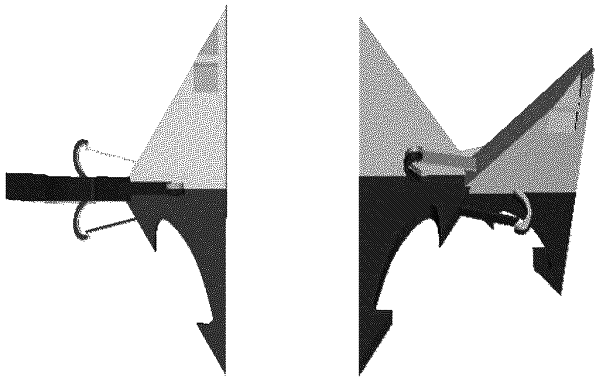| CPC B28B 1/001 (2013.01) [B28B 1/522 (2013.01); B28B 23/022 (2013.01); B33Y 10/00 (2014.12); B33Y 50/02 (2014.12); B33Y 70/00 (2014.12)] | 7 Claims |

|
1. A construction method of spatial aggregate reinforced 3D printed concrete structure, wherein, the construction method comprises the following steps:
(1) selecting a structural member, performing mechanical analysis, and determining a basic dosage and a printing and weaving process of an implanted reinforcement or braided rope/wire material according to a stress distribution and size under an ultimate bearing capacity of the structural member;
(2) determining a type, position and dosage of a spatial aggregate according to a stress distribution and size under a normal bearing capacity of the structural member, wherein the spatial aggregate is a spatial rigid aggregate composed of biomimetic structures formed by aggregates of different shapes, the aggregate has a multi-limb structure in space, the tail of the aggregate is provided with snaps and end anchors for linking between the spatial aggregates, and the center of the spatial aggregate is provided with a clasp for socketing with reinforcement rebar or rope/wire;
(3) preparing 3D printing materials, and editing an electromagnetic signal and positioning push program of the spatial rigid aggregate according to the selected positioning and dosage of the spatial rigid aggregate; and
(4) extruding the 3D printing material along the printing and weaving process in step (1), and while the reinforcement being implanted or the rope/wire being woven into the space, evenly scattering the spatial rigid aggregate; using the electromagnetic signal and positioning push program in step (3) to realize the connection between spatial aggregates and the connection between the spatial aggregates and the reinforcements rebar or ropes/wires respectively; forming a spatial aggregate reinforced 3D printed concrete structure at one time after layer-by-layer construction, superimposed and hardened, or after segmented printing, connecting component nodes through lap design of preset tenon and mortise and reinforcement rebar or rope/wire to form the spatial aggregate reinforced 3D printed concrete structure;
wherein, in step (2), a method of determining a type, positioning and dosage of a spatial aggregate according to a stress distribution and size under a normal bearing capacity of the structural member is as follows:
(2-1) selecting the type of spatial aggregate according to a distribution of shear stress, selecting design parameters of end anchors and snaps in the tail according to the value of shear stress, and determining the number of limbs of the spatial aggregate according to the anisotropy of the shear stress, wherein the design parameters of the end anchor comprise lengths and widths of the tips of the end anchors;
(2-2) designing the dosage of the spatial rigid aggregate according to a safety factor determined by a ratio of principal stress/material strength, and locating the spatial aggregate according to the incorporation region and the shape of the structural member; and
(2-3) determining an encryption area of the spatial aggregate according to a size and regional distribution of the safety factor and the threshold value, and determining the threshold value according to an actual working condition.
|